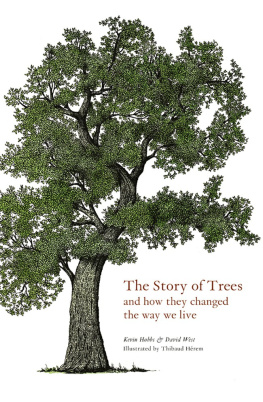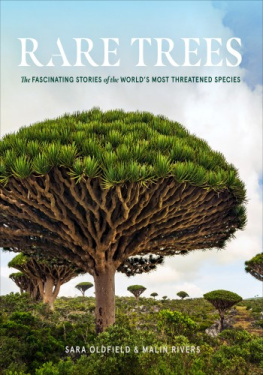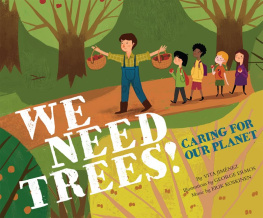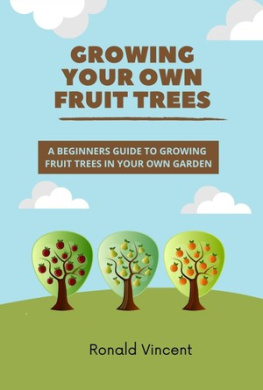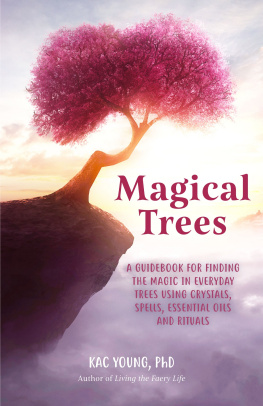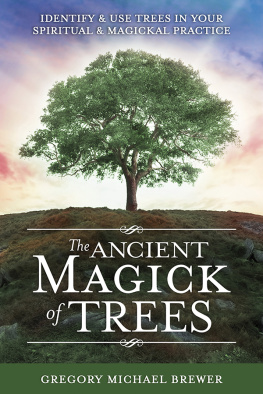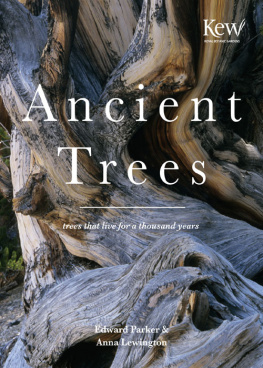The Story of Trees

Published in 2020
by Laurence King Publishing Ltd
361373 City Road
London EC1V 1LR
Tel +44 20 7841 6900
Fax +44 20 7841 6910
E
www.laurenceking.com
Illustrations Thibaud Hrem, 2020
Mark Fletcher, 2020
Kevin Hobbs and David West have asserted their right under the Copyright,
Designs and Patents Act 1988 to be identified as the Authors of this work.
All rights reserved. No part of this publication may be reproduced or transmitted in any form or by any means, electronic or mechanical, including photocopy, recording or any information storage and retrieval system, without prior permission in writing from the publisher.
A catalogue record for this book is available from the British Library.
ISBN 978-1-7862-7522-6
eISBN 978-1-7862-7789-3
Illustrated by Thibaud Hrem
Designed by John Round Design
Contributing editor: Nick Yapp
Printed in China
Laurence King Publishing is committed to ethical and sustainable production. We are proud participants in The Book Chain Project bookchainproject.com

The Story of Trees
and how they changed
the way we live
Kevin Hobbs & David West
Illustrated by Thibaud Hrem
Laurence King Publishing
Contents
Foreword
by Dr. Alexandra Wagstaffe
Crop Physiologist and Lecturer in Horticulture, Eden Project Learning

L ike a meeting with old friends, this well-researched story of trees reminds us of trees we are familiar with while at the same time intriguing us with details and histories that are less or unfamiliar. Reading this book will provoke curiosity equally among well-seasoned plants people and those who are not, who may simply have stumbled across this impressive piece of work by chance. Nevertheless, there is no question about the value of trees and their contribution in supporting life on our planet as we know it.
The book maintains a delicate balance between fact-finding and storytelling. Each tree is introduced with fascinating botanical facts and examines geographical distribution over time, which seamlessly gives way to delightful anecdotes about how they have changed the way we live. Kevin Hobbs and David West treat the subject with a lightness of touch that belies the many extensive travels and fact-finding missions around the world. Comparable to modern-day plant hunters, their global awareness of the importance of plants to humankind is evident, told in charming, bite-sized ethnobotanical stories covering all continents. All the while, the narrative is set by the trees themselves, with the structure being guided by the chronological order in which they were evidenced to have played an important role in the lives of humankind.
Fascinating stories unfold, such as the English walnut (Juglans regia), one of humanitys oldest and healthiest foods, most recently celebrated for its high levels of Omega 3 fats and antioxidants. However, the earliest written reference to the walnut comes from the peoples of Chaldea in Mesopotamia, present-day Iraq. Inscriptions on ancient clay tablets proudly describe walnut groves in the Hanging Gardens of Babylon in about 2,000BC. As a child within a European expat community, growing up in modern-day Iraq, historical references to the influence of Mesopotamia fascinate me, and I defy any reader to not find equally compelling stories of trees that have had a direct influence on them and their lives.
With 24 years experience in crop physiology and plant sciences, my interest in trees has focused somewhat on physiological questions, such as how trees function. For example, for water to move from the roots to the uppermost leaves it has to travel a vertical distance of approximately 120 metres (393 feet) in some of the worlds tallest trees, such as Sequoia sempervirens, (the California redwood). This truly monumental achievement is made possible by a complex interaction of anatomical adaptations, pathways and pressure differentials. However, it is not only the scientific complexity of trees that is astonishing, they also have the capacity to fill us with a sense of awe in their mere presence; for example, the wonderment we may feel as human beings when standing under trees that have witnessed their surroundings for hundreds and, in some cases, thousands of years.
The role trees play within cultures and communities can be explained by an innate human connection with the natural world, often described as Biophilia. American naturalist Edward O. Wilson first defined this concept in 1984 as the urge to affiliate with other forms of life. As such, this philosophy crosses the boundaries between scientific and spiritual exploration, which are successfully combined in The Story of Trees, where the authors have engagingly managed to convey the importance of trees while linking their traits to our human history throughout the ages.

Introduction
by Kevin Hobbs

T rees and the kingdom of plants are fundamental to our existence and development as a human race. However, apart from being aware of their contribution to the very air we breathe, few people realize the important role trees played in the lives of our ancestors and continue to play in our lives today present as the paper on which these words are printed; enjoyed with a coffee from the coffee bean; or keeping us comfortable as a key material of our homes and their contents. We travel around in cars propelled by fossil fuel, on tyres made from rubber, along tree-lined streets. We fill our shopping baskets with numerous tree products, from fruit, nuts, herbs and spices to wine bottles sealed with cork. We decorate our homes using varnish that is a resin produced by a bug that feeds on trees, and clean our wooden-handled brushes with white spirit derived from the sap of a tree. The list goes on and on, encompassing medicine, toiletries, clothing and a great deal more. In fact, the relevance of trees in this modern, technological world continues, as demonstrated by the use of cork bark in the thermal insulation of spacecraft.
Our ancient ancestors, being closer to nature, used their native tree resources fully and often sustainably. For many, trees held great cultural or religious significance and, as such, were seen as a gift from, or representation of, deities. Reverence for the tree is evident throughout antiquity, and, indeed, persists in many cultures today. However, the wealth and ultimate success of many civilizations and countries was built on trade in their own resources, or those of others. Trade routes on land and sea contributed to the expansion of knowledge and the distribution of plant material. Where climate allowed, trees expanded beyond their original range and, often, became subject to natural or man-made hybridization.
Trees were among the first crops to be cultivated as humankind sought to take control of their resources. Unfortunately, the opposite was often the case for trees prized for their wood, or a derivative. They were obtained destructively, their very existence threatened by over-harvesting. Inevitably, civilizations or nations sought to take control of such valuable commodities. Trees and their products were at the centre of many conflicts, often at the expense of indigenous peoples. Great cruelty, as well as slavery, was endured as powerful nations and businesses vied for control. In many cases, trees were farmed in colonies far from their origin, ensuring stabilization of the markets, but often at the cost of ecological balance.

